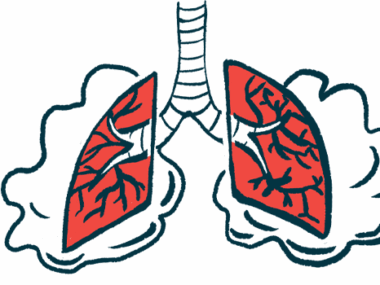Women more likely to develop sinonasal sarcoidosis: Review study
More than half of affected patients see symptoms lessen after treatment
Written by |

Sinonasal sarcoidosis, when the disease affects the nasal cavity and the surrounding air-filled cavities called the sinuses, mainly affects women and manifests as nasal obstruction, according to a review study.
More than half of people with sinonasal sarcoidosis experience symptom lessening after treatment with medications and/or surgery.
“Prompt recognition and aggressive treatment are crucial to minimize [disease] and improve quality of life,” researchers wrote.
The study, “Sinonasal Sarcoidosis: A Scoping Review of Demographics, Clinical Presentation, and Outcomes,” was published in Laryngoscope Investigative Otolaryngology.
Largest proportion of sinonasal sarcoidosis patients were Black
Sarcoidosis is marked by an excessive activation of the immune system that leads to the formation of small clumps of inflammatory cells, called granulomas, in different organs.
“The upper airway … is involved in approximately 6% of patients with sarcoidosis,” the researchers wrote, adding that “sinonasal sarcoidosis is generally associated with systemic [bodywide] sarcoidosis but can rarely present independently, leading to several diagnostic challenges.”
Specifically, sinonasal sarcoidosis can resemble other conditions affecting the nose and present symptoms similar to rhinosinusitis, or inflammation of the moist tissue lining the nasal cavity and surrounding sinuses.
To date, most of what is known about sinonasal sarcoidosis comes from case reports and case series. “No studies have reported a comprehensive review of such cases,” the researchers wrote.
In this study, a team of researchers in the U.S. systemically reviewed studies published up to November 2024 that described sinonasal sarcoidosis cases. A total of 54 studies, covering 103 patients and published between 1959 and 2023, were included in the final analysis.
Participants were diagnosed at a median age of 40 years, ranged in age from 18 to 80, and were predominantly women (65%). Race was not reported in 42% of cases, but the largest proportion of patients were Black (30%).
“The disproportionate prevalence of sinonasal sarcoidosis in Black and young female patients in our [study] aligns with the demographic literature on sarcoidosis,” the researchers wrote. “The racial disparities observed in this review reiterate the importance of awareness of the increased occurrence of nasal sarcoidosis in certain minority populations to ensure a timely diagnosis and prompt management.”
Treatment resulted in symptom lessening in more than half of participants
Available data on symptoms showed the most common were nasal obstruction, affecting a little over half of the patients. The next most commonly reported symptoms were nodules, plaques, or discoloration of the external nose (15%); sinusitis, or inflammation of the nasal sinuses (14%); and nose swelling and runny nose (13% each).
Other symptoms reported included nose deformity (12%), crusting — or the formation of hard or thickened mucus — (11%), nasal polyps (10%), and loss of sense of smell (8%).
The mean duration of symptoms before presentation was three months, while the range was about two weeks to three years. Nearly all of the 75 cases that featured sinonasal biopsies as part of the diagnostic process showed signs of sarcoidosis.
In addition, 62% of the 42 patients with available data for angiotensin-converting enzyme (ACE), a marker of sarcoidosis, showed high levels of the enzyme.
“These findings highlight that if clinical suspicion is high enough with an inconclusive biopsy, clinicians should look for other diagnostic clues such as an elevated ACE enzyme,” the researchers wrote.
Most patients received treatment with corticosteroids (73%), followed by surgical procedures (38%) — particularly a minimally invasive procedure called endoscopic sinus surgery (32%).
Our findings highlight the benefits of surgical management in patients with prolonged disease, severe symptoms, or disease [resistant] to medical management.
In 40% of the cases, patients received combination treatment, most commonly corticosteroids with endoscopic sinus surgery (15%). In a few patients, corticosteroids were used in combination with other immunosuppressive medications, including hydroxychloroquine and methotrexate.
Treatment resulted in symptom lessening in more than half of the participants (56%), no changes in 16%, and no evidence of disease in 9%. One patient saw his condition worsen after treatment, and another died.
Of the participants who underwent surgery, 69% saw their symptoms ease, 13% reported no changes in symptoms, and 3% had no signs of the disease after treatment.
“Our findings highlight the benefits of surgical management in patients with prolonged disease, severe symptoms, or disease [resistant] to medical management,” the researchers wrote, adding that “combination therapy can improve outcomes, but a lack of established protocols creates a challenge for many patients.”
The team concluded that “further investigation into the workup, including diagnostic and preoperative imaging studies, indications and timing for surgical intervention, and treatment … is warranted to optimize patient outcomes and reduce disease morbidity.”







